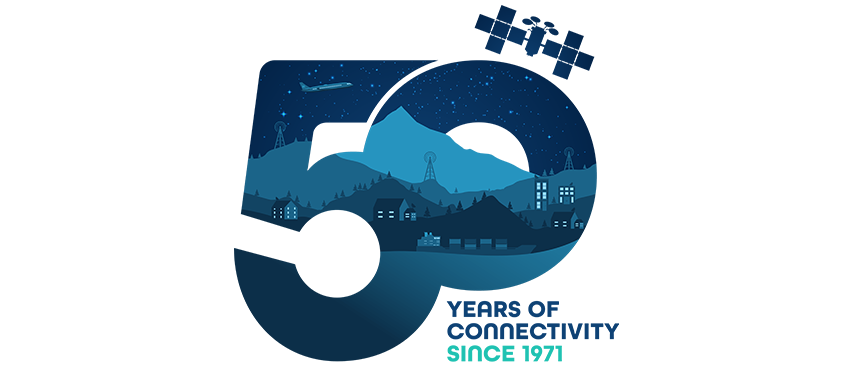Top 5 Innovations Developed at Hughes

This year marks the 50th year for Hughes Network Systems. Like every great start-up story, this one begins in a humble, suburban garage, where seven young engineers started a business designing telecom circuit boards. That was 1971.
Today, Hughes powers satellite and multi-transport solutions for millions of people, businesses, governments, and communities around the world.
Our Top 5 Innovations
To commemorate our 50 years, we surveyed employees about their thoughts on key achievements, impacts, and predictions. After all, who better to provide the detail for any Top 5, Top 10 or Top 50 list than the Hughes employees involved in connecting and orchestrating the networks on which people everywhere depend? Since many of our employees have worked for Hughes for decades, they have industry-leading perspectives to share.
Here’s how they weighed in on the question: What are the most important innovations developed at Hughes?
- Satellite Broadband – Driven to connect the unconnected, Hughes invented satellite internet, bringing the benefits of broadband to millions of families that other ISPs wouldn’t serve.
- VSAT (Very Small Aperture Terminals) – Comprised of an antenna (the “dish”), an outdoor unit and an indoor unit, these convenient, two-way ground stations made it possible to transmit and receive satellite data from anywhere.
- JUPITER™ Platform – The most widely used VSAT system in the world, the JUPITER platform is the system of choice for network operators, governments, mobile networks, and aeronautical and maritime service providers, operating on more than 40 satellites around the globe.
- HughesON™ Portfolio – This next-generation portfolio of network and digital media solutions, including industry-leading Software Defined Wide Area Network (SD-WAN) solutions, meets a range of distributed enterprise needs. In our survey, the HughesON Portal also got several shout-outs for its ability to provide customers with an interactive, easy to use dashboard and a view into network activities, installs, trouble reporting, and ticketing.
- OneWeb – Hughes is building the gateways and core modules for this constellation of Low Earth Orbit (LEO) satellites which will enable low latency service worldwide, a complement to the capacity density of the Hughes JUPITER fleet of high-throughput geostationary satellites.
These five innovations barely scratch the surface of the technological advances that were developed at Hughes over the years. From contributing significantly to the DVB-S2 and DVB-S2X standards to introducing adaptive coding and modulation (ACM) on the TDMA return channel, to using Artificial Intelligence (AI) for a self-healing capability to improve network performance, Hughes has innovation at its core, continuing to push the limits of what’s possible. And we are just getting started.